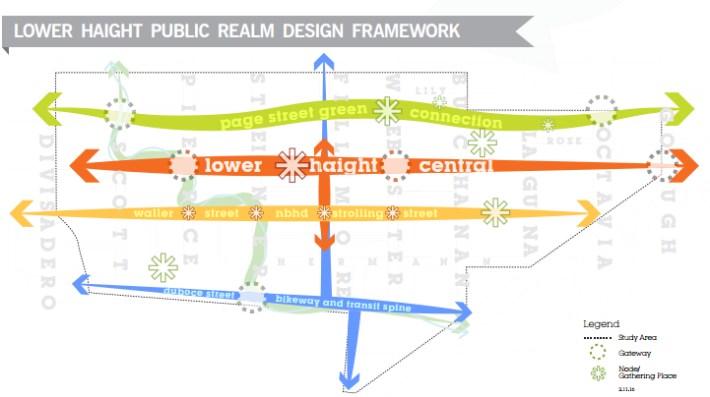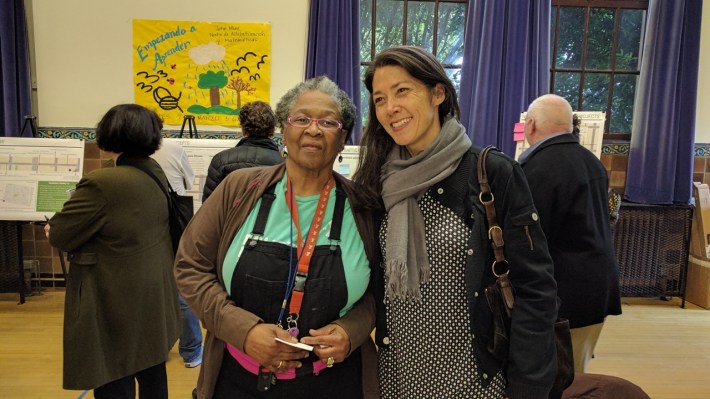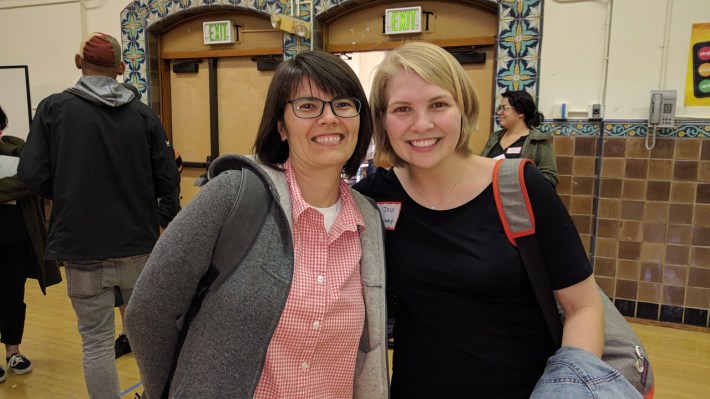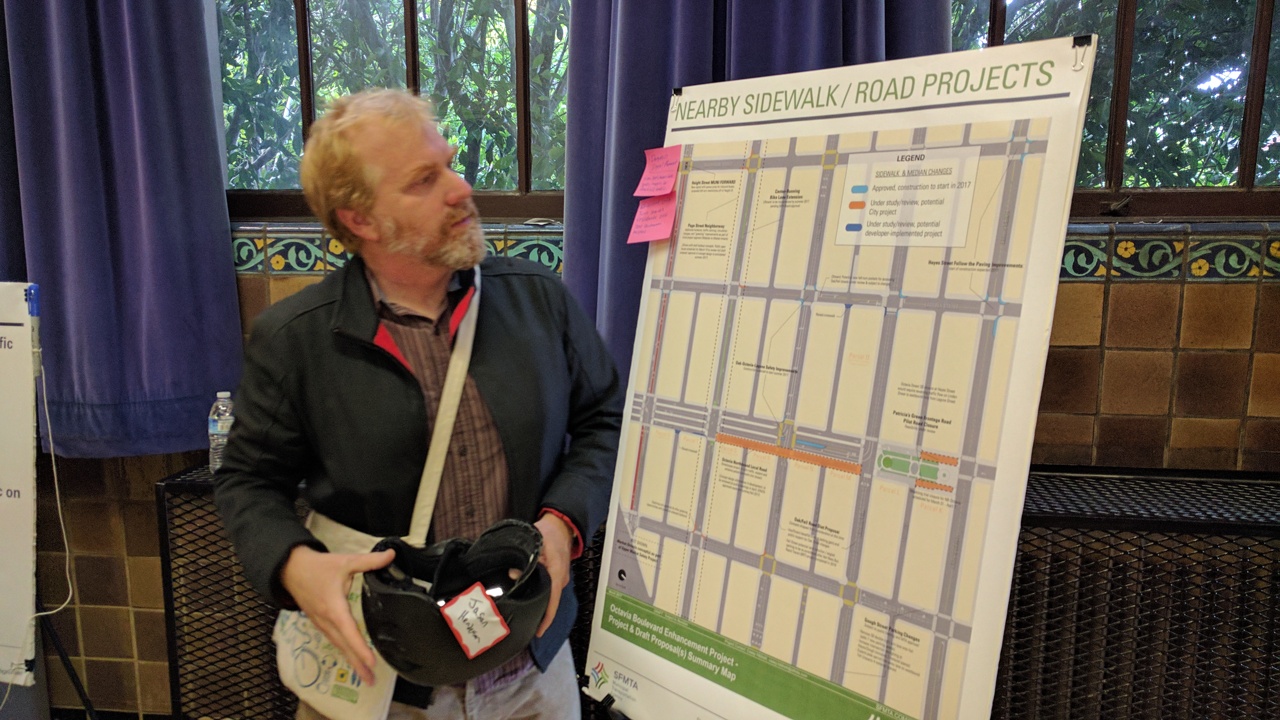Representatives from San Francisco's Planning Department, the Municipal Transportation Agency, and Public Works were on hand last night at John Muir Elementary School to hear more public comment on the Lower Haight Public Realm Plan, a project that promises, among other things, better bike and pedestrian amenities for the neighborhood.
From the Planning Department's website about the project:
The Lower Haight Public Realm Plan aims to develop a community-based vision for the neighborhood's public realm: its streets, sidewalks, parks, and public places... The Plan will also incorporate conceptual streetscape designs for pedestrian amenities such as lighting, greenery, and signage to create a more safe, comfortable, and efficient environment for all users, whether they walk, bicycle, use transit, or drive.
First, the art component: the Planning Department has a $45,000 grant for a temporary art project--called "tactical interventions," to use the planning jargon, explained John Dennis of Public Works. "Part of this project is to embed a pilot for small interventions that can activate a space." He cited some of the work done on Market Street and at UN Plaza, setting up art projects along the street, as a model.

As for bike safety, Hoodline did a great piece last year breaking down the proposed segments and options for Page Street, which included everything from protected bike lanes to more sharrows. But Streetsblog was disappointed to see that physically protected bike lanes are no longer on the table. "Too many driveways to complete corridor wide" and "Requires too much parking loss for benefits" is what SFMTA had on their display boards at the open house.
That said, one exciting alternative still under consideration is to turn a segment of Page into a "bicycle street," as seen in Portland and Berkeley, using a traffic diverter. The idea is to force automobiles to turn off Page with a traffic island, curb, or rail, to prevent them from using it as a through-street--but openings would be left so bicycles can continue straight through (see center image below). This preserves free on-street residential car storage (aka: parking) but should make the street quieter and calmer for cyclists. "I'm cautiously optimistic about the Page idea," said Jason Henderson, geography professor and Streetsblog contributor. "We need an east-west bicycle boulevard... if we're aiming for 20 percent bicycle mode share."
Improved crosswalks, with bulbouts and better markings, and wider sidewalks, are also part of the plan--and that can't come too soon for those who attended the open house. Dawn Nakano, who does communications for public schools, including John Muir, said serious measures are needed to slow down traffic. "The aggressive driving on Webster and Oak is horrific," she said. "A kid got hit last year on Webster... and parents are driving their kids because they're afraid to let them walk." Jeanette Dupas, who has two grandchildren at the school, said drivers blow past kids in the crosswalks and even flip off the crossing guard. She also complained that too many cyclists do "stupid stuff" and blow through red lights. "We need help on this corner."

Natalie Burdick of Walk San Francisco was also at the meeting and she was on the same page about Page as Henderson. "We need that proposed traffic diverter... the more traffic calming measures the better." She also wants to see raised crosswalks "to slow traffic and make people more visible."

Of course, as is always the case with these projects, not everyone was 100 percent enthusiastic about the proposed changes. Rick Pirman lives on Lily Street. "I'm a long time neighbor--38 years," he said. "I've seen my neighborhood go from scary to fancy-schmancy." He welcomes that change, but doesn't want to see all the parking go away. "I have a beat up old truck to get my groceries... I don't want to lose my parking spot."
The project will be finalized by the Spring of 2017 with the first temporary installations going in later this year.






